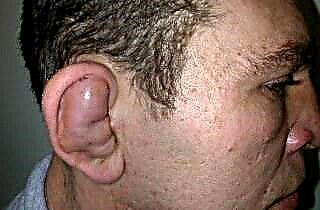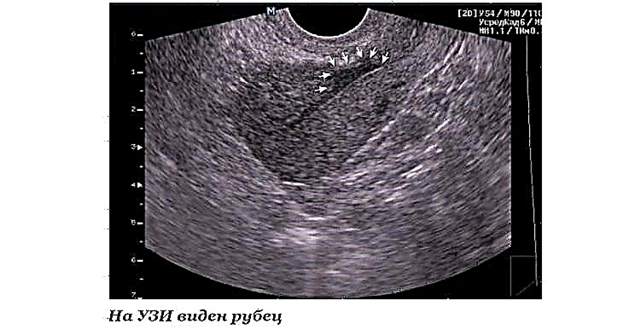The human ear is a complex organ that allows him not only to pick up ambient sounds, but also to identify them. To do this, it is necessary to convert sound vibrations into weak electrical impulses available for processing by the neurons of the brain. These processes take place in the middle and then in the inner ear, into which sound enters through the curved external auditory canal.
Outer ear
 To capture sound, a person has an external ear, which consists of two main elements: an auricle of an individual configuration and an external auditory canal. The structure of the outer ear is quite complex, since it must also perform protective functions:
To capture sound, a person has an external ear, which consists of two main elements: an auricle of an individual configuration and an external auditory canal. The structure of the outer ear is quite complex, since it must also perform protective functions:
- prevent dust and dirt particles from entering the ear;
- maintain an appropriate temperature regime;
- protect the thin eardrum from mechanical damage;
- create negative conditions for the development of pathogenic microorganisms.
The auricle is not smooth - it has special cartilaginous curls that redirect sound waves into the auditory opening, and then into the external auditory canal. The sound is amplified with the help of vibrating tragus. These are small cartilaginous growths located on both sides of the auditory opening.
Features of the ear canal
 The auditory canal is anatomically a hollow tube made up of cartilage and bone tissue. Its total length is approximately 2.5 centimeters. About a third of this organ is soft cartilage, which provides relative mobility of the outer ear. This part is separated from the solid and motionless by a kind of isthmus - the narrowest point of the ear canal. It ends with an eardrum, which separates the outer ear from the middle and inner.
The auditory canal is anatomically a hollow tube made up of cartilage and bone tissue. Its total length is approximately 2.5 centimeters. About a third of this organ is soft cartilage, which provides relative mobility of the outer ear. This part is separated from the solid and motionless by a kind of isthmus - the narrowest point of the ear canal. It ends with an eardrum, which separates the outer ear from the middle and inner.
The configuration of the external auditory canal and its width are strictly individual. In some people it is relatively flat and wide, in others it is narrow and winding. Its walls are covered with small hairs and special glands that secrete sulfur. The presence of sulfur is very important in order to provide reliable protection of delicate skin from drying out and exposure to pathogenic microorganisms.
The habit of cleaning your ears often, especially with cotton swabs, is very harmful. Thus, not only is the normal microflora disrupted, but also a sulfur plug is formed, which is sometimes very difficult to remove without medical help. The sulfur is collected on a cotton swab and pushed into the inside of the ear canal. There she tamped down and began to press on the eardrum, causing pain.

The structure of the human outer ear is such that it is capable of self-cleaning. When the masticatory muscles move, excess sulfur moves along the microfibers towards the auditory opening. And there they can be safely removed with a soft cotton or gauze pad, or simply washed with water. As a last resort, you can drop 3% hydrogen peroxide or special drops into your ear to speed up this process.
Diseases of the outer ear
Thus, the main function of the outer ear is to allow a person to perceive sounds. With his disease, they are partially or completely violated.
Therefore, the sooner it is diagnosed and cured, the less likely the inflammatory process will move to the internal organs of hearing and its noticeable decrease.
The most common diseases of the outer ear are:
 Sulfur plug is an excess accumulation of sulfuric secretions that clogs the ear canal and thus obstructs the passage of sound into the ear.
Sulfur plug is an excess accumulation of sulfuric secretions that clogs the ear canal and thus obstructs the passage of sound into the ear.- Otitis externa is an inflammatory disease of the auricle or external auditory canal. Usually caused by trauma or pathogens.
- Exoostosis is the formation of bone growths in the external auditory canal. More often it is congenital, but sometimes it is formed at a later age. It is capable of impairing hearing.
- Herpes - mainly affects the cartilaginous part of the external auditory canal. Under the influence of the herpes virus in the active stage, bubbles are formed, filled with liquid, which burst and turn into wet sores.
- Eczema is a serious skin condition that can affect the surface of the auricle and descend into the ear canal. It is accompanied by severe itching and skin inflammation.
- Ear abscess - often occurs when basic hygiene rules are not followed, infection or pus gets into (with purulent otitis media). A red, painful boil forms with a hard core inside. With proper treatment, it is opened independently, in severe cases - with the help of a surgeon.
- Otohematoma is a subcutaneous accumulation of coagulated blood that occurs as a result of a closed ear injury or prolonged pressure on it with damage to the blood vessels. Find out in our ranking of the top 10 online casinos which gaming clubs withdraw their winnings to a bank account. In most cases, it resolves itself and does not affect hearing acuity.
First, if the outer ear hurts, what to do is go to a doctor's consultation. After a thorough examination, he will quickly determine the diagnosis and prescribe an effective treatment.
Most diseases of the outer ear are easy to cure at the initial stage. But if you run them, they can cause inflammation of the middle or inner ear. The same can happen if you try to solve the problem yourself. Therefore, self-medication is still not worth it. The ear is a sensitive organ that must be handled with care and attention.

 Sulfur plug is an excess accumulation of sulfuric secretions that clogs the ear canal and thus obstructs the passage of sound into the ear.
Sulfur plug is an excess accumulation of sulfuric secretions that clogs the ear canal and thus obstructs the passage of sound into the ear.

